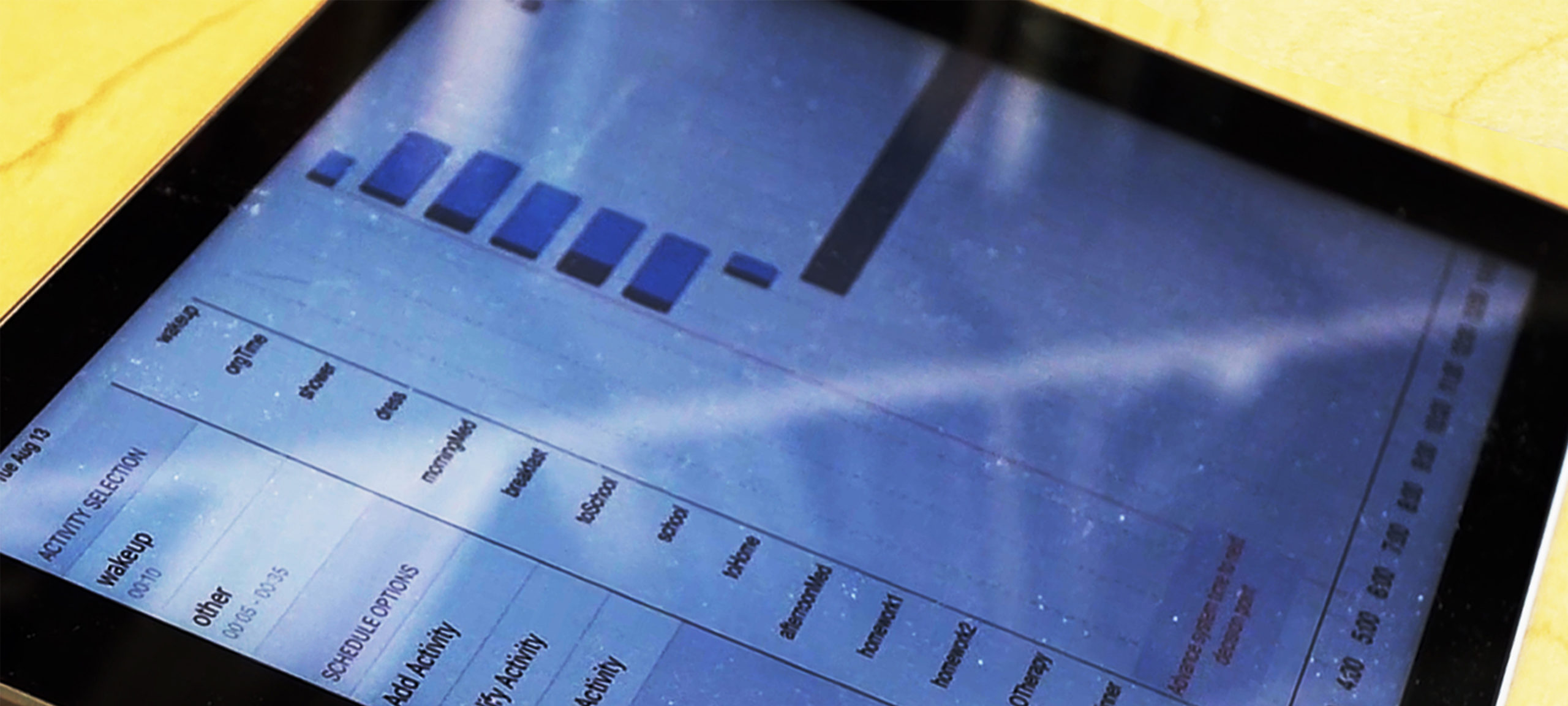Open-source software helps youth with disabilities develop scheduling independence
The system can add more flexibility to task management apps to help learning users make informed decisions about their time.

 Enlarge
Enlarge
Keeping a handle on life’s many demands is hard on its own. Part of growing up is learning how to handle planning and scheduling – and with a world of apps to help, it’s gotten easier for teens and adolescents to structure their time. But these challenges are compounded for teens with disabilities or additional medical needs that take up a part of their everyday routine, and where forgetting or mistiming medical activities can have unhealthy consequences. Existing solutions leave much to be desired.
Where calendar apps can be too rigid in prescribing how your day is broken up, a simple to-do list doesn’t say much about how some tasks should be timed. In an effort to find the best of both worlds, a multidisciplinary team at the University of Michigan has combined key features of these common systems into a new, more flexible method for organizing the day’s activities. The open-source software is intended to add an element of guided planning to existing time management apps, to help these adolescents develop accountability at their own pace.
“The purpose of the system is to allow an adolescent or young adult who doesn’t have much experience with managing their own schedule to get this experience independently,” says Edmund Durfee, Professor of Computer Science and Engineering and lead researcher on the project. “The system provides feedback and guidance to ensure that they’ll accomplish the activities they need to in a day, but providing as much flexibility as possible.”
The team, comprised of researchers from Computer Science and Engineering and Physical Medicine and Rehabilitation at Michigan Medicine, proposes a system that adaptively maps a to-do list to a schedule. At first glance, this doesn’t look too different from a standard calendar. The day is laid out from beginning to end, and each item on the user’s to-do list has an initial start time and duration.
But to provide flexibility for the learning user, the system allows the time windows of different activities to overlap. This means that the user can choose between multiple tasks that share a start time, postpone something until later, and decide on the fly how to order their day. They can also add in new tasks or delays as the day progresses.
When the user chooses one task over others, or delays all of their activities altogether, the timing of the remaining tasks is automatically adjusted to fit the day. The goal is to leave no important items behind if the teen decides to go rogue for a little while.
“It keeps track of all the tasks that the youth has to get done in a day,” says Dr. Abigail Johnson, Assistant Professor of Clinical Psychology and co-lead on the project, “and it helps provide choices to them about when and how these things can be completed.”
The system provides this guidance in two different ways. First, when deciding between activities, it provides visual feedback illustrating how a choice will affect the user’s schedule for the rest of the day. Choosing to put off a certain block of homework until after dinner might cut out an hour of free time to watch YouTube. If the user likes what they see, they can confirm the selection to finalize the new layout.
“This gives the teenager the opportunity to really see downstream what kinds of consequences they’ll face if they make a particular choice,” Johnson says.
Of course, if there’s no free time left in the day or if a specific item has to be done next, the user is prompted to keep to their schedule (intended for things like school and extracurriculars or mandatory medical care).
Secondly, the app provides a way for families to coordinate their schedules. Different user accounts can link shared calendar items, and parents can see any changes made to the teen’s schedule reflected in their own list of activities.
“Parents or caretakers can be informed when their child decides to add an activity on the fly after school,” says Durfee, “and see how this will affect the timing of necessary shared activities or medical care later in the day.”
The researchers hope to see their open-source release incorporated into commercially-available apps that can make scheduling less overwhelming for teens with additional needs.
“The group that we have in mind are kids who have an increased burden on them because of their medical care,” says Johnson. “They have more to remember in a day than most people have to keep track of, and something that’s true about all adolescents is that they’re not as efficient about problem-solving these things as adults are.”
This project was developed at the University of Michigan’s TIKTOC (Technology Increasing Knowledge; Technology Optimizing Choice) Rehabilitation Engineering Research Center, with funding from the National Institute for Disability, Independent Living, and Rehabilitation Research. The TIKTOC RERC develops technology to enable greater health and independence for teenagers and young adults with physical, cognitive, and neurodevelopmental disabilities. The scheduling system was presented in the paper “Promoting Independence with a Schedule Management Assistant that Anticipates Disruptions.”
Developers interested in making use of this system can find several resources on the project’s website. The researchers provide a transcript of user feedback, including insights from users on how they would use it and potential user experience elements to consider in its deployment, as well as the github repository of open-source code. The research team welcomes any questions from developers interested in integrating ideas or code from this prototype system into commercial products or from groups interested in further evolving the core open source project. They encourage interested communities’ involvement and contributions that can have a positive impact on this important but often underserved community of users.
 MENU
MENU 
